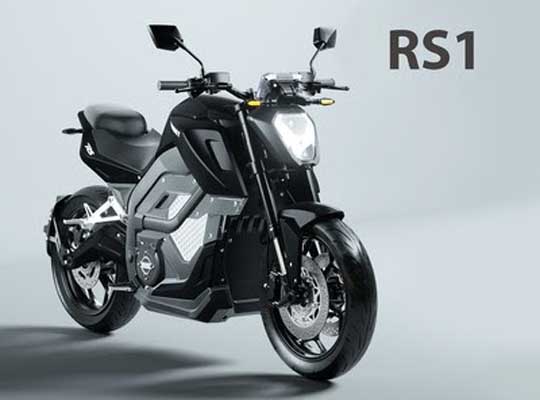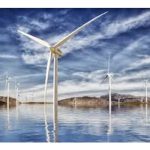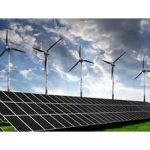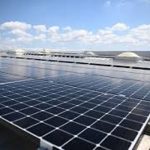VANCOUVER – Electric powered vehicles are currently a big point of interest. Electric cars are on the verge of replacing Internal Combustion Engine (ICE) vehicle and currently, there isn’t a single car manufacturer that hasn’t made a vehicle with at least one electric motor. With the advancement of technology, another category of electric transportation has started to evolve – the electric cycles. Electric bicycles were the first to conquer the European market by storm in 2014-2016, and the North American market four years later. While the e-bike market was expanding in North America, the next stage of the electric cycle revolution began in Europe – the electric motorcycle. Instead of buying ICE motorbikes, the European population began to adopt their 50 -150cc electric equivalents for their daily transportation needs. Their range of 80 -140km and their speed of 70 – 120 km/h was sufficient for the daily commuting needs of the average European citizen even for highways. Switching to this mode of transportation became an attractive option for urban commuters due to four reasons: their zero emission and silent operation, avoidance of the road congestion and substantial government rebates. Ultimately, this created a demand for personal electric transportation and exposed a niche for electric motorcycles equivalent to their ICE counterparts. In 2016 the Australian-Chinese company Vmoto was the first to tap into this niche in Europe with their brand Super Soco. With affordable prices, their bikes proved to be a very practical and convenient mode of transportation especially for those living in cities.
In North America, electric motorcycle manufacturers like Brammo and Zero were founded much earlier – in 2002 and 2006 respectively. Their ambition was to compete with high-power ICE motorbikes, but their limited range and higher price point ultimately reduced their demand in the consumer market. For similar reasons Brammo lost the battle in 2014. Zero was the only manufacturer that endured the bumpy market owing to the fact that they signed contracts with US law enforcement to supply with their machines. Despite this, in 2020 Zero sold an estimated 3,500 motorcycles globally. For the same period, Australian company Vmoto, which started manufacturing their Super Soco brand electric motorcycles nine years after Zero, sold 23,000 electric two-wheelers in 2020 according to their annual report. Proportionally, through the years this is 20 times more than Zero without accounting for its year-after-year percentage increase. Harley Davidson electric bikes sales were not impressive either. Since the release of their Livewire in 2019, they sold roughly 1,700 units worldwide. Recently Harley Davidson announced the release of a smaller and less expensive urban oriented model set back by a three-year delay. Meanwhile, brands like Super Soco, Horwin and Kollter conquered the European market. In 2021Super Soco sold over 1000 units in the UK which rated them as the fastest growing electric motorcycle manufacturer. According to the UK Motorcycle Industry Association (MCIA) the average electric motorcycles registration increase was 51.2% while Super Soco sales increased by 478% in 2021! This clearly illustrates the slower growth of the electric motorcycle industry when it is not mass consumer oriented.
With the added benefits of decreased maintenance, operation costs, free parking, bus lane sharing and government incentives such as rebates, the electric motorcycle quickly became the preferred choice for NA citizens. The most attractive aspect being their affordability with prices ranging between $4,000 and $7,000USD. Brands like Super Soco, Horwin, Kollter and Evoke started to emerge in the last few years on the North American city streets. Greenwit Technologies – the exclusive Canadian distributor for all these brands registered sales growth of almost 200% in 2021 compared to 2020.
The rapid adoption of electric motorbikes in North American cities was also accelerated by limiting some models to 70km/h which places them in the same category as 50cc gas motorcycles which do not require a special motorcycle license. The simplicity of their operation (no gears, no clutch) was another factor for their mass adoption. The instant torque of electric motorbikes is a feature that makes them superior to their same power rated gas counterparts with acceleration that exceeds well above them, ultimately making them more agile and safer in busy urban traffic.
When it comes to electric cars, their main disadvantage is charging – particularly for those who can’t charge them at their homes. Almost all Super Soco, Horwin and Kollter models are equipped with removable batteries, which can be charged separately. This means that they can also be plugged in at an office until fully charged. Depending on the rider’s preference for distance or speed, these bikes provide different speed modes. These modes do not sacrifice their ability to handle steep terrain and many of them can handle hills like San Francisco’s famous vertiginous grades, which is not achievable by their ICE counterparts.
As e-bikes sales exceeded the sales of the regular bikes in Europe and North America, a similar pattern is underway with electric motorcycles. North American people require electric cycles with longer range and speeds for commuting in urban and suburban environments. Additional factors such as government commitment for zero emission transport, gas price increases, and urban congestion accelerate the desire to make the switch. Manufacturers like Ducati, Honda, Triumph, and BMW have already committed with their introduction of electric bikes in the near future. Brands like Super Soco, Horwin, Kollter and others are now filling the demand for the light electric urban transportation, but they won’t stop there. Later this year Vmoto Soco and Kollter will be releasing their next level bikes named Stash and RS1 with higher speeds, longer range and more powerful motors with presumably more affordable prices.











